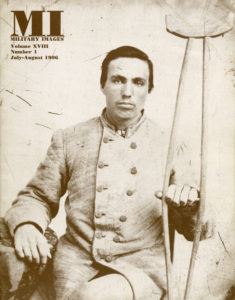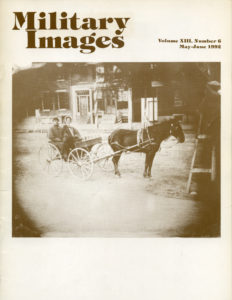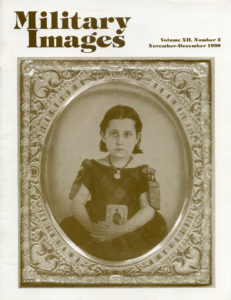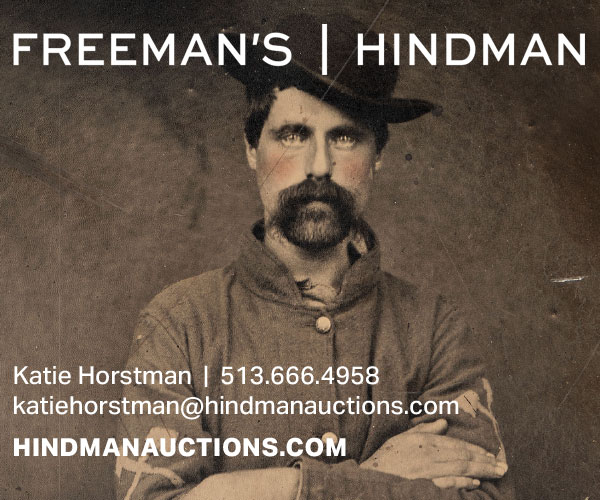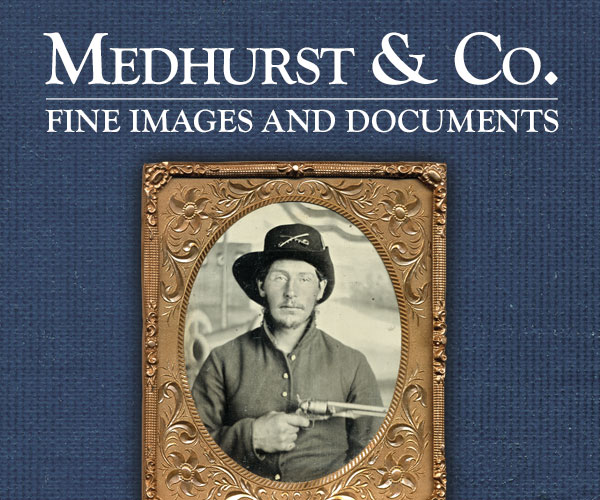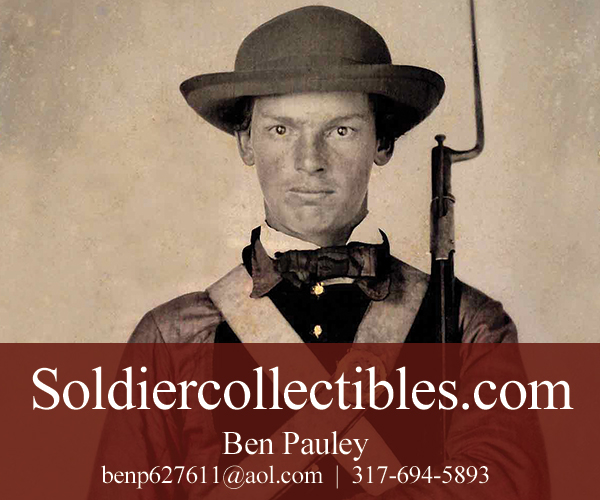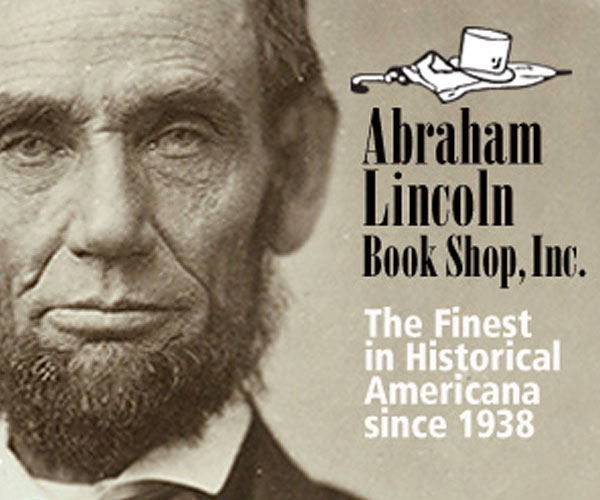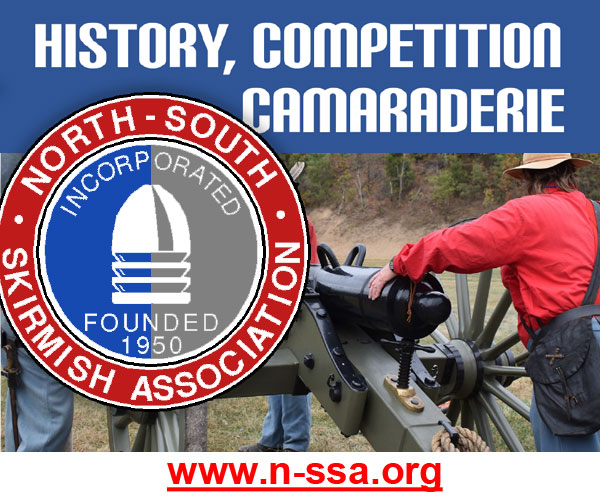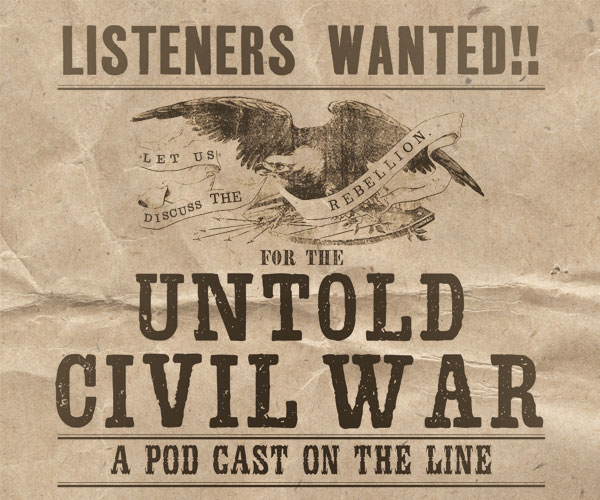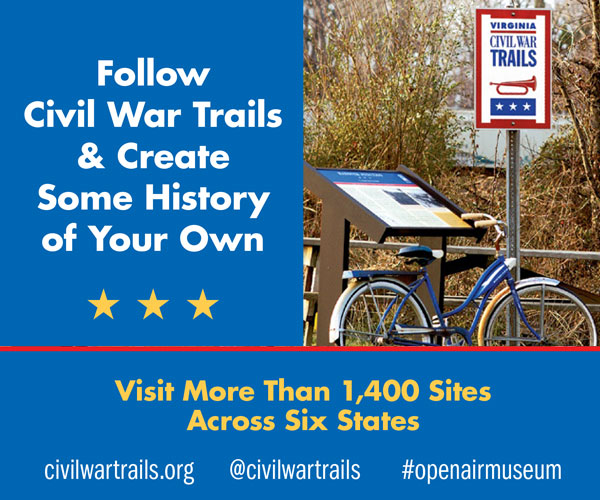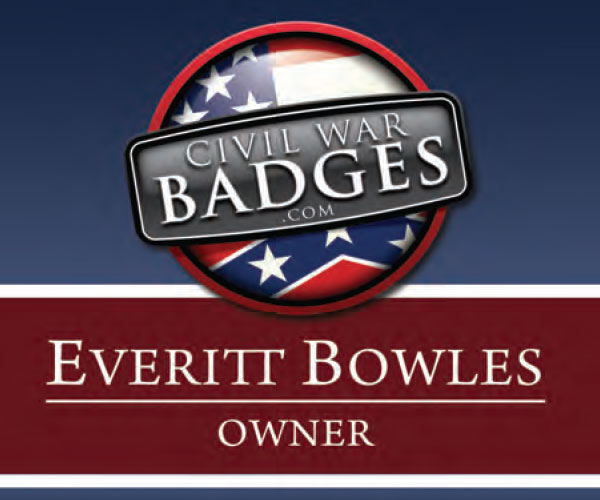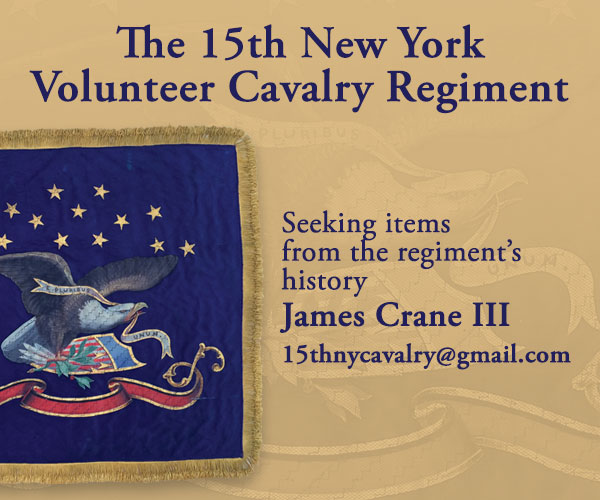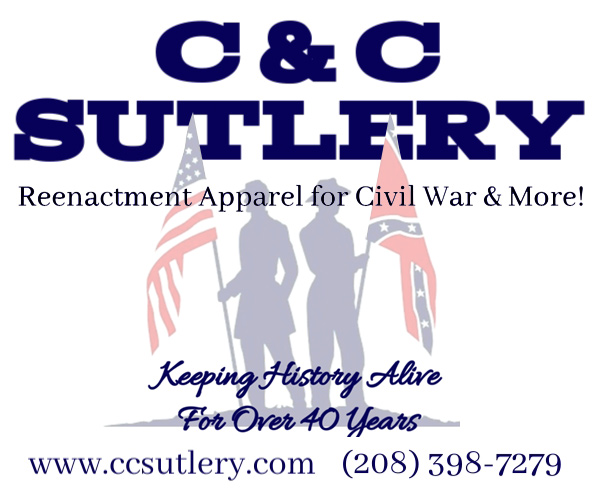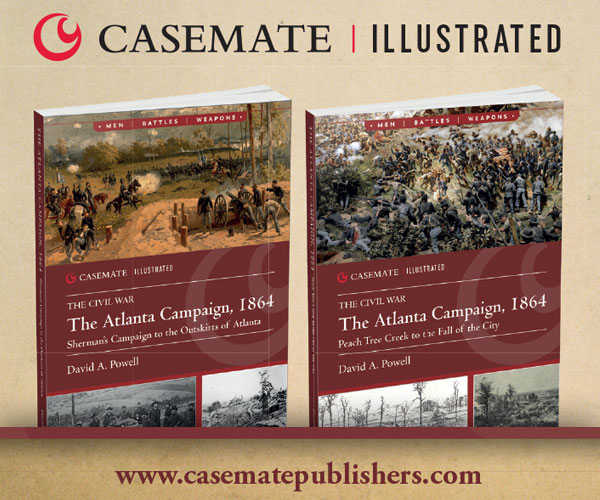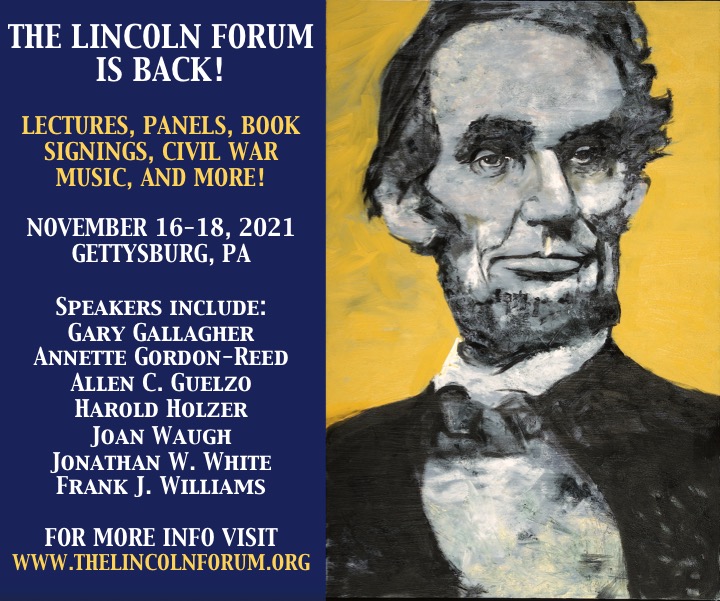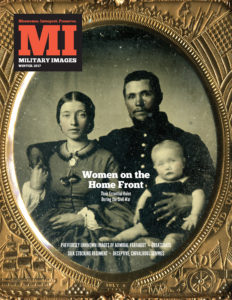 The complete issue
The complete issue
Vol. XXXV, No. 1
(72 pages)
Print edition: Visit our store to check availability
Digital edition: Visit JSTOR.org to purchase
Subscribe to MI
Explore the MI Archives: Browse | Advanced search | Tutorial
Inside
Cover image
A sixth-plate ambrotype from the Rick Brown Collection pictures a Union soldier with his wife and child in a warm embrace.
Download (free)
Table of Contents (p. 1)
Download (free)
Editor’s Desk (p. 2)
In “History Revealed, One Photo at a Time,” the editor highlights the contributions of Chuck Winans and Glenn Hilburn, who both shared historically significant images in the issue. He notes, “Many more historically significant images await discovery in attics, basements and elsewhere in homes across the country. When you pause to consider that interest in these portraits is a relatively recent phenomenon that dates to the 1960s, it is perhaps fitting that these images have only now come to light. I’m excited for more such individuals to step forward and share their discoveries and stories in MI.”
Download (free)
Mail Call (p. 3)
Feedback includes comments about the insignia and equipment from “Colts, Knives and Cigars” (Autumn 2016) and the identification of two Zouaves.
Download (free)
Passing in Review (p. 4)
The Civil War Trust’s Civil War In4 video collection is an engaging series that has something to offer for the expert and the novice. Garry Adelman and a series of guest hosts explore a range of topics.
Download (free)
Photo Sleuth by Kurt Luther (pp. 6-7)
A “guest sleuth” column features the experience of Laura Elliott of Rainbow City, Ala. She submitted a wonderful story about her recent success in identifying a Confederate ambrotype in the Liljenquist Family Collection of Civil War Photographs at the Library of Congress.
The Honored Few (p. 8)
In “A Ditch Too Far,” we meet William J. Archinal of the 30th Ohio Infantry. A German immigrant, Archinal was one of 150 Union infantrymen who volunteered for a “forlorn hope,” the spearhead of a massive Union assault to capture Vicksburg on May 22, 1863. The assault was a failure. A high percentage of the attackers became casualties, including Archinal. He later received the Medal of Honor for his actions.
Antebellum Warriors (p. 10)
A sixth-plate ambrotype from the Kevin Canberg Collection pictures a militiaman and his Mississippi rifle.
Jefferson Davis at the Pinnacle of Power by John O’Brien (pp. 12-13)
The Confederate President and Commander-in-Chief sat for two portraits during his four years as head of state. One, showing Davis with his tie askew, is a rare salt-print, the only known of its kind. The other, showing Davis with his tie straight, was a mass produced carte de visite. Both images were made by Richmond, Va, studio of George W. Minnis and Daniel T. Cowell.
Solemn Vow at Camp Butler by Kathleen Heyworth (pp. 14-16)
Sarah Gallop Gregg, a peacetime milliner in Ottawa, Ill., became a nurse during the Civil War. She ultimately became the Matron of Camp Butler, a facility outside the Illinois capital of Springfield.
On the Eve of First Blood: Rhode Islanders Before First Bull Run by John Banks (pp. 18-20)
Just days before the first major battle of the Civil War, at least 54 soldiers in Company F of the 2nd Rhode Island Infantry posed outdoors for an unknown Washington-based photographer employed by Mathew Brady. In six cartes de visite taken at the regiment’s “Bush Camp” at Centreville, Va., most of the Rhode Islanders, mustered into the federal army only six weeks earlier, seem relaxed, with none showing a hint of the momentous event soon to come.
Authentic Farragut: Previously unknown portraits of the Nation’s first admiral come to light by Chuck Winans and Ronald S. Coddington (pp. 22-24)
David Farragut settled for a time in New York City at the end of the war, and sat for his sculpture by up-and-coming Brooklyn sculptor William Henry Philip. To assist Philip with his work, Farragut gave him two portraits, one in uniform and another in civilian clothes. They’ve been hidden away for the last 150 years—until now.
The Regiment That Saved the Capital by Michael J. McAfee (pp. 38-40)
Nicknamed the “Silk Stocking Regiment” for the socially elite New Yorkers in its ranks, the 7th New York State Militia was never engaged in battle. The regiment however earned recognition for its swift response to an undefended national capital in April 1861, and its service in augmenting regular troops during Confederate incursions into the North. Representative portraits of its membership are included here, along with brief captions that offer basic details and describe their distinctive uniforms.
Women on the Home Front: Their Essential Roles During the Civil War by Juanita Leisch Jensen (pp. 38-40)
The author states, “We have grown accustomed to seeing photographs of soldiers in military publications. Therefore, the presence of females may seem incongruous. It is not.” She adds, “The war presented women with opportunities to support the soldiers and military organizations. Just as the presence of females in these photographs is obvious to us today, their wartime efforts were obvious to soldiers fighting in the Civil War.”
Separated by War: Selected images of Civil War couples and families (pp. 41-50)
A total of 27 ambrotypes, tintypes and cartes de visite feature women with their soldiers. Some are wives, some are sisters and others are daughters. All were important to the home front.
Uniforms & History by Michael J. McAfee (p. 51)
In “Greatcoats of Many Colors,” Mike provides background on winter coats, tracing their early war history, during which period regulation cloth was difficult to find and supply issues were common. Four images illustrate the variety in these often overlooked items.
Stragglers: Distinctive Images from MI contributors (pp. 52-57)
Featured in this issue is a group of portraits of soldiers and their greatcoats. Images include a Confederate soldier with an imported coat fastened with wood buttons, and a drummer and fifer decked out in their winter wear.
Deception and Destruction, Then Chivalry in the Gulf by Ronald S. Coddington (pp. 60-63)
Union Surg. Edward Sylvester Matthews and his crewmates on the Hatteras fell prey to Capt. Raphael Semmes and the Alabama in the Gulf of Mexico. Though they despised being held prisoner beneath the rebel flag, they came to respect Semmes for his compassion.
Rats, Crossed Arms and a Mourning Ribbon by Ronald S. Coddington with Glenn Hilburn and Warren “H” Shindle (pp. 64-67)
An analysis of a newly discovered antebellum portrait of five VMI Cadets provides significant information about its origins and at least on of the sitters—Lucien Dade Winston, a young man who became a Confederate soldier and was inspired by a battlefield dream to establish a village for peaceful, God-fearing folk.
Illustrious American’s Meet the Revolution’s Last Men by Edith Cuerrier (pp. 68-70)
Mathew B. Brady’s lavishly produced oversized 1850 book, Gallery of Illustrious Americans, and Rev. Elias B. Hillard’s tiny Last Men of the Revolution were opposites in many ways. And yet both forever changed biographical portrait books.
Sutler’s Row (p. 71)
The Last Shot (p. 72)
A pipe wielding, unnamed Union officer stands beside a large wood box, marked in chalk, “Prisoner of War Richmond Va care of Gen’l Winder.” A period pencil inscription on the back reads “Ypsi July 1863.” One theory holds that this officer hailed from Ypsilanti, Mich., and fell into enemy hands and was transported to Libby Prison, Castle Thunder or Belle Isle. The date suggests his possible capture during the Battle of Gettysburg.

